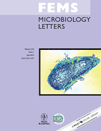
FEMS MICROBIOLOGY LETTERS
Scope & Guideline
Exploring Microbial Innovations and Insights
Introduction
Aims and Scopes
- Microbial Diversity and Ecology:
The journal publishes studies that explore the diversity of microbial communities across various environments, including aquatic, terrestrial, and extreme habitats. This includes investigations into the ecological roles of microorganisms and their interactions within ecosystems. - Pathogenic Microbiology:
Research focusing on pathogenic microorganisms, their mechanisms of infection, virulence factors, and antibiotic resistance patterns is a core area. This encompasses studies on foodborne pathogens, clinical isolates, and their implications for public health. - Biotechnological Applications:
The journal encourages research that leverages microbial processes for biotechnological innovations, such as bioremediation, fermentation technology, and the development of novel antimicrobial agents. - Genomic and Molecular Microbiology:
Papers that delve into the genomic analysis of microorganisms, including studies on gene expression, metabolic pathways, and the genetic basis of traits related to survival and pathogenicity, are prominently featured. - Microbial Interaction and Symbiosis:
The journal highlights research on the interactions between microorganisms and their hosts, including studies on symbiosis, commensalism, and the impact of the microbiome on health and disease.
Trending and Emerging
- Microbiome Research:
The study of microbiomes, particularly in relation to human health, agriculture, and environmental systems, is gaining momentum. This includes investigations into how microbial communities influence health outcomes, plant growth, and ecosystem functioning. - Synthetic Biology and Genetic Engineering:
There is an increasing trend towards research that employs synthetic biology techniques to engineer microbial strains for specific purposes, such as enhanced production of metabolites, biocontrol agents, or bioremediation capabilities. - Impact of Environmental Changes on Microbial Communities:
Research addressing how climate change, pollution, and habitat alteration affect microbial populations and their functions is on the rise. This includes studies on microbial resilience and adaptation mechanisms in response to changing environmental conditions. - Antimicrobial Alternatives and Natural Products:
With the global rise of antibiotic resistance, there is a notable increase in research focused on alternative antimicrobial strategies, including the exploration of natural products, bacteriophages, and novel antimicrobial compounds. - Microbial Interactions in Health and Disease:
Emerging studies are increasingly investigating the complex interactions between human microbiota and pathogens, particularly in the context of chronic diseases, metabolic disorders, and immune responses.
Declining or Waning
- Traditional Microbial Taxonomy:
Research focusing solely on the classification and identification of microbial species without incorporating functional or ecological perspectives is becoming less common. The trend is shifting towards integrative approaches that combine taxonomy with functional genomics and ecology. - Cultivation-Based Studies:
There is a noticeable decline in papers solely dedicated to cultivation-based methods for studying microbes. As metagenomic and high-throughput sequencing techniques become more accessible, researchers are increasingly opting for culture-independent methods. - Antimicrobial Resistance Mechanisms:
Although still relevant, the frequency of studies focused exclusively on basic mechanisms of antimicrobial resistance is waning. More emphasis is being placed on translational research that connects basic science with clinical and environmental implications.
Similar Journals
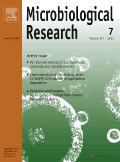
MICROBIOLOGICAL RESEARCH
Leading the Charge in Microbial AdvancementsMICROBIOLOGICAL RESEARCH, published by Elsevier GmbH, serves as a leading platform for advancements in the field of Microbiology, holding an impressive Q1 ranking in its category as of 2023. With an ISSN of 0944-5013 and E-ISSN 1618-0623, this journal has been instrumental in disseminating high-quality research since its inception in 1994 and continues to contribute significantly to the academic landscape through 2024. Positioned within the top 13% of publications in the Immunology and Microbiology category, ranked #24 out of 182 according to Scopus, it attracts the attention of researchers, professionals, and students alike. While the journal is not open access, it offers vital insights and peer-reviewed articles that drive innovation and exploration within microbiological research. Its rigorous selection process underscores the importance of quality and relevance in advancing knowledge in this dynamic field.

JOURNAL OF BASIC MICROBIOLOGY
Unveiling the Secrets of Microbial LifeJOURNAL OF BASIC MICROBIOLOGY is a premier publication in the field of microbiology, published by WILEY since 1985. With a significant presence in Germany, this journal encompasses a wide spectrum of research topics, focusing on applied microbiology and biotechnology as well as diverse areas within medicine. Holding a commendable Q2 ranking in both its categories for 2023, it plays a crucial role in disseminating innovative findings and methodologies to the community. Researchers will find it to be an essential platform for sharing high-quality work, where it currently stands at rank #47 in the applied microbiology and biotechnology category, representing the 63rd percentile among international journals. The JOURNAL OF BASIC MICROBIOLOGY caters to a growing audience of professionals and students, offering insights essential for advancement in microbiological research and its applications. While it does not currently offer an Open Access option, it remains an influential outlet for academic excellence, continuously contributing to the development of the field through its rigorous peer-reviewed articles.

CRITICAL REVIEWS IN MICROBIOLOGY
Navigating the Complexities of Microbial LifeCRITICAL REVIEWS IN MICROBIOLOGY, published by Taylor & Francis Ltd, is a leading peer-reviewed journal that has made significant contributions to the field of microbiology since its inception in 1971. With a prestigious Q1 ranking in Applied Microbiology and Biotechnology, as well as in Medicine and Microbiology, this journal is recognized for its high-quality reviews that synthesize current research and emerging trends in the discipline. Researchers and professionals rely on its comprehensive evaluations and critical insights, helping to advance knowledge and application in various microbiological contexts. Although the journal does not currently operate under an open access model, it remains an invaluable resource for academics seeking to stay at the forefront of microbiological advances. With a consistent publication record, CRITICAL REVIEWS IN MICROBIOLOGY continues to support the scholarly community by addressing key issues and innovations within the field.
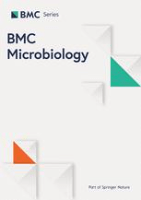
BMC MICROBIOLOGY
Transforming health and environment through microbiological excellence.BMC Microbiology is a leading open access journal published by BMC, dedicated to advancing the field of microbiology since its inception in 2001. With an ISSN of 1471-2180, this journal provides a vital platform for researchers, professionals, and students to share and access high-quality research and innovation in both general and medical microbiology. Based in the United Kingdom, BMC Microbiology holds a commendable Q2 ranking in both various microbiological categories according to the 2023 Scopus rankings, indicating its strong influence in the microbiological community, with a rank of #47 out of 140 in Medical Microbiology and #62 out of 182 in general Microbiology. The journal's commitment to open access ensures that groundbreaking research is freely available to facilitate collaboration and knowledge sharing among the global community of microbiologists. With a focus on publishing original research, reviews, and case studies, BMC Microbiology plays a critical role in disseminating information that can impact health and environmental conditions around the world.

CANADIAN JOURNAL OF MICROBIOLOGY
Championing Excellence in Microbial ScienceThe Canadian Journal of Microbiology, published by Canadian Science Publishing, is a well-respected journal established in 1954 that serves as a vital platform for advancing knowledge in the fields of microbiology and related disciplines. With an ISSN of 0008-4166 and an E-ISSN of 1480-3275, this journal is recognized for its rigorous peer-review process and its commitment to disseminating high-quality research that spans applied microbiology, biotechnology, genetics, immunology, and more. Currently indexed in several prestigious databases, its impact factor and category quartiles highlight its significance, ranking in the top tiers of applied microbiology and biotechnology as well as other intersecting fields. The journal provides an essential resource for researchers, professionals, and students seeking to stay informed on the latest advancements and breakthroughs, facilitating collaboration and innovation in the microbiological sciences. Set in the dynamic landscape of academia from its headquarters in Ottawa, Canada, the Canadian Journal of Microbiology remains steadfast in its mission to promote research that addresses key challenges and opportunities within the microbiological community.
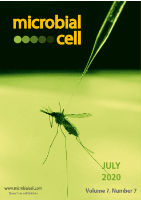
Microbial Cell
Exploring the dynamic world of microbiology and beyond.Microbial Cell is a distinguished open-access journal published by SHARED SCIENCE PUBLISHERS OG, focusing on the dynamic fields of microbiology, biochemistry, and molecular biology. Since its establishment in 2014, Microbial Cell has been at the forefront of disseminating cutting-edge research essential for advancing our understanding of microbial functions and interactions. With a commendable impact factor and ranking in the top quartiles (Q1 and Q2) across several categories, including Applied Microbiology and Biotechnology and Parasitology, this journal serves as an invaluable resource for researchers, professionals, and students alike. It features a comprehensive scope that encompasses the latest findings in genetics, cell biology, and virology, facilitating the academic community's access to high-quality peer-reviewed work. Microbial Cell not only contributes to advancing microbial sciences but also fosters an inclusive platform for knowledge sharing and collaboration in the scientific community.
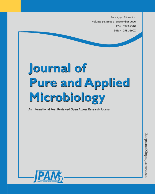
Journal of Pure and Applied Microbiology
Transforming Microbial Discoveries into Real-World ApplicationsJournal of Pure and Applied Microbiology, published by DR M N KHAN, is an esteemed Open Access journal that has been dedicated to advancing the frontiers of microbiological research since its inception in 2007. Located in Bhopal, Madhya Pradesh, India, this journal presents a platform for researchers and professionals in the fields of Applied Microbiology and Biotechnology, offering insights that span a diverse range of topics critical to both scientific progress and industrial applications. As of 2023, the journal is categorized in the Q3 and Q4 quartiles, demonstrating its relevance and growing impact within the community—ranking #219 in Biochemistry, Genetics and Molecular Biology and #93 in Immunology and Microbiology. With an emphasis on accessibility, the journal has embraced an Open Access format since 2017, allowing for a wider dissemination of knowledge. By publishing high-quality research, the Journal of Pure and Applied Microbiology plays a pivotal role in fostering innovation and collaboration among researchers, students, and industry professionals alike.

PLASMID
Exploring the intricate world of plasmids.PLASMID is a prestigious academic journal published by Academic Press Inc Elsevier Science that focuses on the dynamic field of molecular biology, particularly in the study of plasmids and their roles in gene function and expression. Since its inception in 1977, the journal has built a robust reputation, currently holding a Q3 category ranking in Molecular Biology and positioning itself within the 34th percentile based on Scopus metrics, making it a valuable resource for researchers and professionals alike. With an ISSN of 0147-619X and E-ISSN 1095-9890, PLASMID offers a wealth of articles that delve into cutting-edge research, facilitating knowledge-sharing and inspiring innovations in the field. Although it does not operate under an open-access model, the journal remains committed to advancing scholarly communication and maintaining high standards of academic rigor. Researchers and students engaged in biochemistry, genetics, and molecular biology will find PLASMID to be an essential platform for disseminating their findings and exploring novel ideas.

Microorganisms
Exploring the unseen world of microorganisms.Microorganisms is a leading open-access journal published by MDPI based in Switzerland, catering specifically to the rapidly evolving fields of microbiology and virology. Since its inception in 2013, the journal aims to foster the dissemination of high-quality research through its comprehensive and interdisciplinary platform, with a particular focus on both fundamental and applied microbiological sciences. Contributing to its esteemed reputation, Microorganisms holds a commendable Q2 ranking in the categories of Microbiology and Virology, as well as in Medical Microbiology, highlighting its significance in the academic community. With a consistent impact, evidenced by its rankings in Scopus—such as rank #25 in Virology and #56 in Microbiology—the journal serves as an invaluable resource for researchers, professionals, and students looking to stay at the forefront of microbiological research. As an open-access journal, Microorganisms ensures that vital research findings are readily available to a global audience, promoting collaboration and innovation in the study of microbial life and its implications for health and disease.
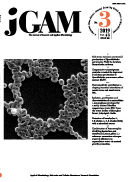
JOURNAL OF GENERAL AND APPLIED MICROBIOLOGY
Unveiling the microscopic world for practical solutions.JOURNAL OF GENERAL AND APPLIED MICROBIOLOGY, published by the MICROBIOL RES FOUNDATION, is a vital resource in the fields of applied microbiology and biotechnology, as well as in diverse medical applications, serving an academic community dedicated to advancing microbial science. Established in 1955, this journal has a rich history of disseminating innovative research and insights into the intricate world of microorganisms. With an ISSN of 0022-1260 and an E-ISSN of 1349-8037, the journal maintains high scholarly standards and robustness, reflected in its 2023 Scopus rankings placing it in the Q3 and Q4 quartiles within its categories. While primarily based in Japan, the journal engages a global audience, offering valuable contributions that inform both theoretical perspectives and practical applications in microbiology. Despite being a non-open-access publication, it provides pivotal research findings essential for academics, professionals, and students alike, fostering a deeper understanding of microbial impact on health and the environment.